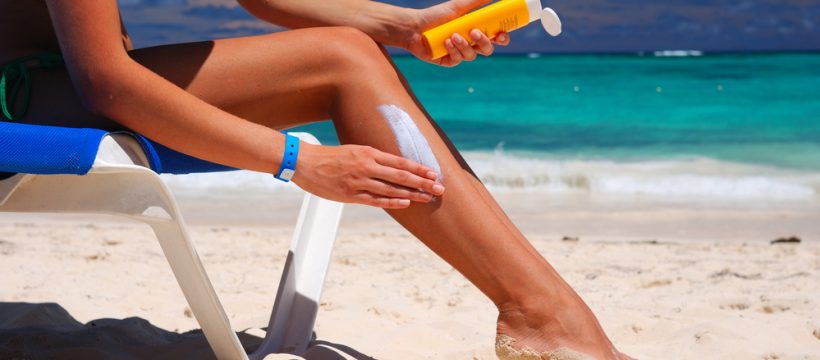Most people would love to have a sun-kissed, golden complexion – especially many of our readers, who have worked hard for their physiques! But, as we know, UV exposure can be highly damaging to the skin, so what can be done to make sun tanning safer?
Although a tan may look healthy and attractive, it is in fact a sign that the skin has been damaged. A sun tan is developed when the skin absorbs UV (ultraviolet) radiation from the sun’s rays, causing the skin to darken due to higher levels of melanin. This is the body’s way of preventing further skin damage at the same level of UV exposure.
A higher level of UV radiation results in a higher risk of skin burning and damage. You can find out what the level of UV radiation is forecasted to be by viewing the weather report for your area. The UV index reading doesn’t tend to be shown when the level is low or moderate but it is usually highlighted when the level heightens. The index begins at 0 and goes up to 10+, with a higher index rating indicating a higher level of UV radiation (and therefore more protective measures are required).
What is the difference between sun block and sun screen?
Sun screens have a Sun Protection Factor (SPF) which can range from 4 upwards. The higher the SPF, the greater protection you will achieve. Dark skinned people and those which do not burn may find a low SPF is suitable for their needs, but it is worth noting most skin experts recommend a sun screen with a SPF of at least 15 so you limit your risk of skin damage. Pale skinned people and those prone to burning may wish to opt for a much higher SPF, such as 35-40.
Sun screen will not prevent you tanning; it will offer some protection so you avoid sun burn and excessive skin damage. However, this is assuming you pick a sun screen with a suitable SPF.
Sun block is different to sun screen – as its name suggests, sun block is designed to avoid any skin damage by totally blocking UV radiation (and therefore tanning).
Sunburn and tanning precautions
It is a myth that sunburn will fade into a tan. Sunburn is the visible damaged blood vessels on the surface of the skin, and should be avoided at all costs due to the risks involved. Sunburn can lead to sun spots, skin inelasticity, and skin cancer. So, how can we avoid sun burn?
- Use a suitable sun screen (see above for information regarding SPF)
- Sun screen Get out of the sun and apply after-sun cream if you are turning red or feel your skin burning. should be re-applied every twenty minutes and make sure the sun screen is waterproof. Remember the risks remain when you are in water.
- Avoid the sun when it is excessively high in UV radiation (check the UV Index)
- Wear suitable sun glasses which block out UV rays to avoid eye damage
- Do not tan for excessive periods of time, and avoid sleeping in the sun
